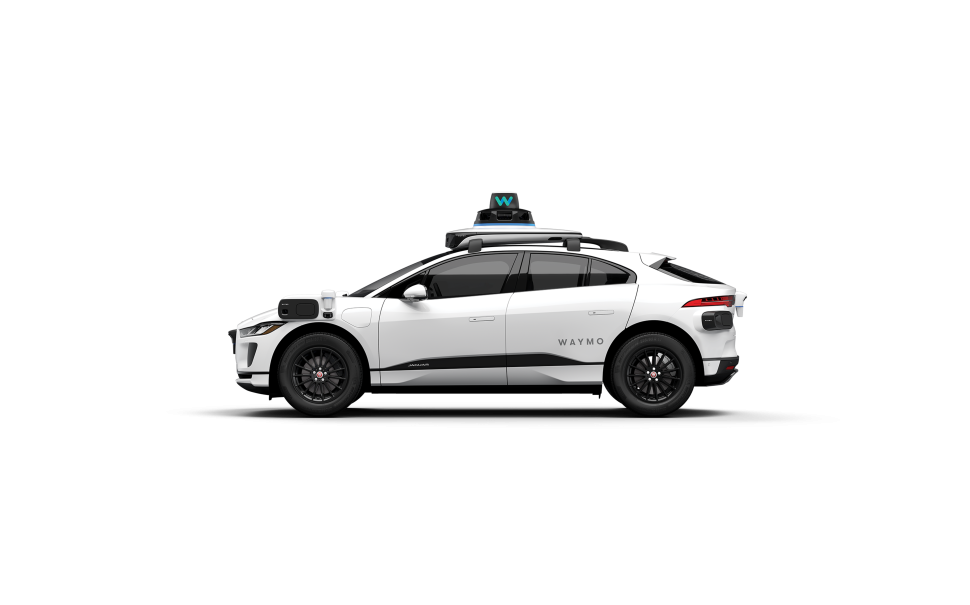Following a viral video showing an LA tech entrepreneur stuck in a driverless taxi, which continuously circles the same roundabout, residents of London may be excited or reluctant to know that driverless taxis could appear on UK roads as soon as 2026.
Self-driving taxi company Waymo currently leads the rapidly expanding industry, having already established services in Los Angeles, San Francisco, Austin and Phoenix, and with plans to expand their operations into Texas, Miami, Atlanta, Florida and Tokyo.
Having visited the States recently, Waymo vehicles are ubiquitous in the frenzy of San Francisco traffic, with the sensor adorned Jaguar E-PACE’s lining the city’s roads, despite the limited area of their sanctioned operation.
Whilst somewhat unsettling at first, the sight of an empty driver’s seat therefore swiftly became commonplace.
A Waymo spokesperson said: “Waymo has global aspirations but no immediate plans [to expand to the UK].
“Waymo is testing its technology internationally.
“Waymo, in partnership with Nihon Kotsu and GO, will bring our autonomous vehicles to Tokyo for our first international road trip.”
The rapid expansion of Waymo has seen an unlikely partnership form, with their announcement in May 2023 of a link with former competitors Uber to facilitate their operations in Phoenix.
The partnership has since been expanded to encompass Waymo’s operations in Austin and Atlanta.
This is particularly surprising as in 2018 the two companies engaged in a legal dispute regarding Uber’s alleged theft of trade secrets from Alphabet, Google’s parent company, in the hiring of former employee Anthony Levandowski.
As part of the eventual settlement, Uber ensured Waymo’s hardware and software would not be incorporated in Uber’s systems and also agreed to pay out 0.34 percent of Uber’s equity, at a $72 billion valuation at the time of the agreement, to their former competitors.
Regarding the partnership, Waymo co-CEO Tekedra Mawakana, said: “Waymo’s mission is to be the world’s most trusted driver, and we’re excited to launch this expanded network and operations partnership with Uber in Austin and Atlanta to bring the benefits of fully autonomous driving to more riders.”
However, despite the company’s current success, the majority of the cities in which it operates contain strict grid road systems.
It begs the question: could such a service be established, and effectively function, in a sprawling historical metropolis such as London?
This is a city containing a road network resembling a spilt bowl of noodles rather than a neoclassical architectural sketch.
When asked how Waymo’s technology might adapt to UK-specific challenges, a spokesperson said: “During the Waymo Driver’s Tokyo road trip, it will learn and adapt to left-handed traffic and new driving nuances associated with operating in one of the world’s most densely populated urban environments.
“In addition to learning from road trips, Waymo takes an incremental approach to new cities.
“Waymo uses a combination of supervised and unsupervised testing and phased availability, always guided by its safety framework, to ensure the Waymo Driver—our automated driving system—acclimates to a new environment.”
The potential pitfalls have not deterred UK government officials however, as the Automated Vehicles Act was passed on the 20 May 2024, under Rishi Sunak’s Conservative government, allowing self-driving vehicles onto British roads by 2026.
A Department for Transport spokesperson said: “Following Royal Assent of the Automated Vehicles (AV) Act, we are now preparing a suite of consultations which will enable the safe deployment of automated vehicle on our roads in 2027.
“The AV Act implementation timeline is designed to prioritise the development of a regulatory framework that maximises innovation, public safety and strengthens public confidence.
“Alongside developing our domestic regulations, we are playing a leading role in work to harmonise international rules on self-driving, which will enable our companies to export globally.
“This work is anticipated to complete in early 2027.
“Ahead of full implementation in 2027, we continue to work with industry to support safe innovative trials that can improve regulatory and public understanding.”
Although the government website suggests the Automated Vehicle Act could lead to the creation of over 38,000 new jobs by 2035, the potential for mass layoffs is readily apparent.
According to Mondo, in 2024 Uber announced roughly 35% of its recruiters are set to experience layoffs in the near future, following on from several smaller rounds of layoffs across the company’s various departments last year.
Despite this however, London taxi drivers do not seem concerned.
London Cab Drivers Club chairman Grant Davis said: “I do not see autonomous vehicles as a threat to London taxis at all.
“It makes great copy, but its completely nonsensical in a town like London.
“In the US roads are predominantly wider and straighter – look at a typical London taxi route, say Victoria Station to Vine Hill EC1.
“It is bad enough for us cabbies, let alone an autonomous vehicle.
“Maybe a flat journey up and down a motorway, but still I cannot see it.”
Davis also pointed to some further potential pitfalls.
He said: “Also for passenger safety, what happens say late at night and some thieves stand in front of an AV whilst others open the doors and rob the passengers?”
With regard to the Automated Vehicles Act, the government website states they are expected to improve road safety by reducing human error, which contributes to 88% of road collisions.
According to Waymo’s website, when considering all locations together, compared to the human benchmarks, the Waymo Driver achieved an 85% reduction in crashes involving any injury, from minor to severe and fatal cases plus a 57% reduction in police-reported crashes.
But despite these positive figures, individual sentiments surrounding the services have been mixed, with the reported burning of a Waymo vehicle in San Francisco’s Chinatown last year.
The International Brotherhood of Teamsters’, a labour union founded in 1903 and operating in the US and Canada, pressure California’s local governments to introduce further regulation at the start of last year.
On their website, the Teamsters cite a number of incidents involving automated taxis, including a Cruise vehicle running over a pedestrian, blocking first responders, and Cruise and Waymo vehicles collectively causing ‘mayhem in San Francisco’.
The road ahead for driverless taxis in the UK therefore remains uncertain.
While the Autonomous Vehicle Act has laid the groundwork for their introduction by 2026, significant challenges evidently must be addressed – from adapting to London’s complex road network to ensuring passenger security and gaining the public’s trust.
The contrasting views between government optimism and the scepticism of experienced taxi drivers highlight the balance which must be struck between innovation and practicality if autonomous taxis are to be deployed on UK roads.
As Waymo and other companies continue their global expansion, their success in navigating Tokyo’s left-hand traffic system could provide valuable insights into how these vehicles might eventually be integrated in the UK.
However, only time will tell whether autonomous taxis can truly revolutionise urban transport in cities such as London or if they’ll remain better suited to the grid-like structure of American metropolises.
Feature image credit: Waymo





